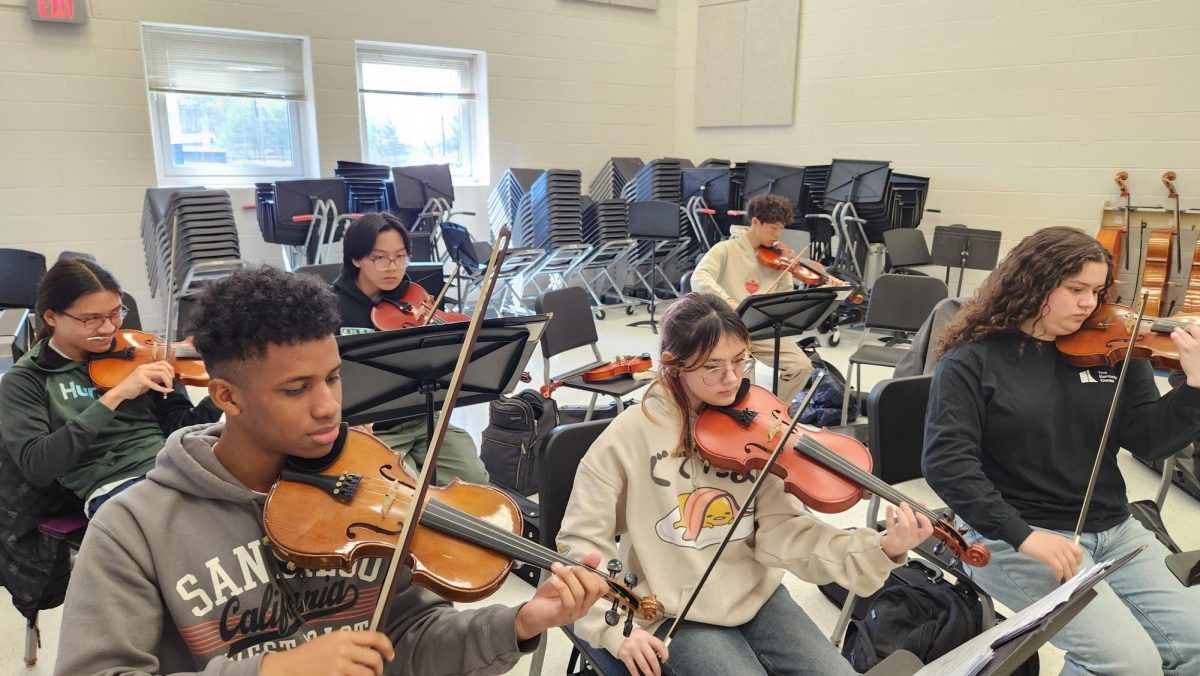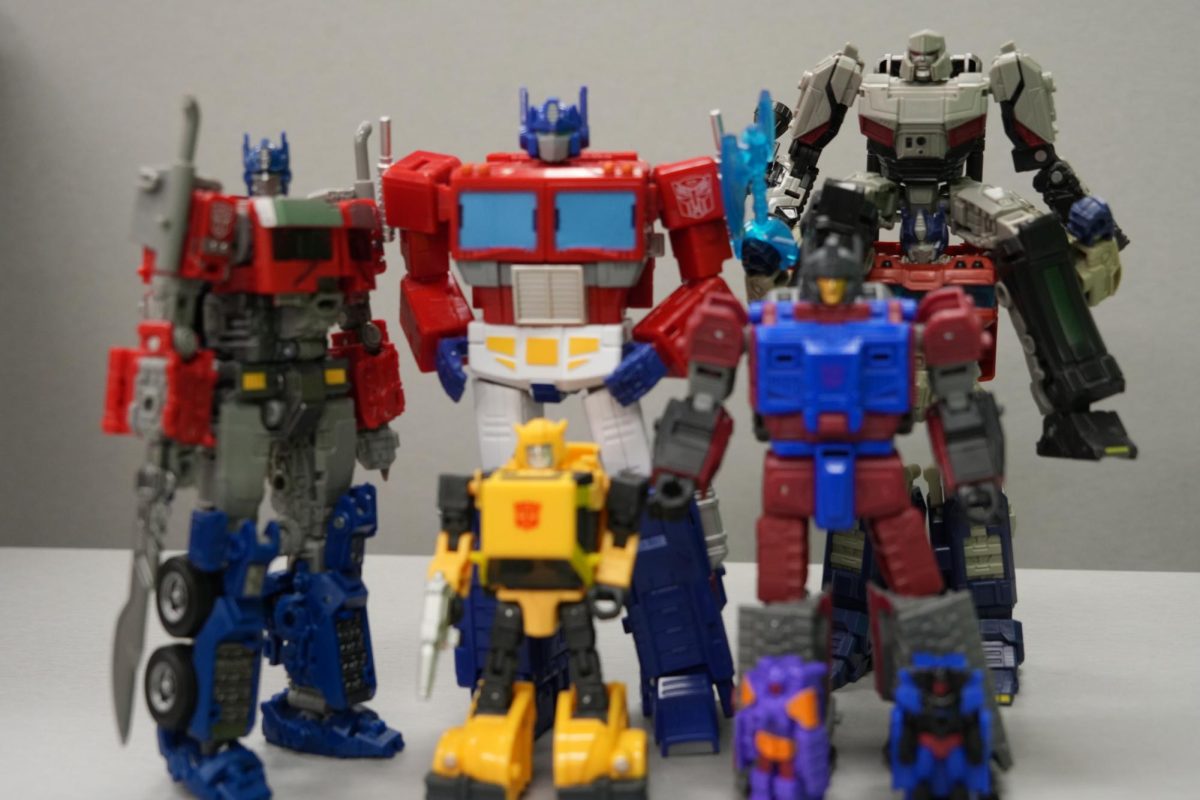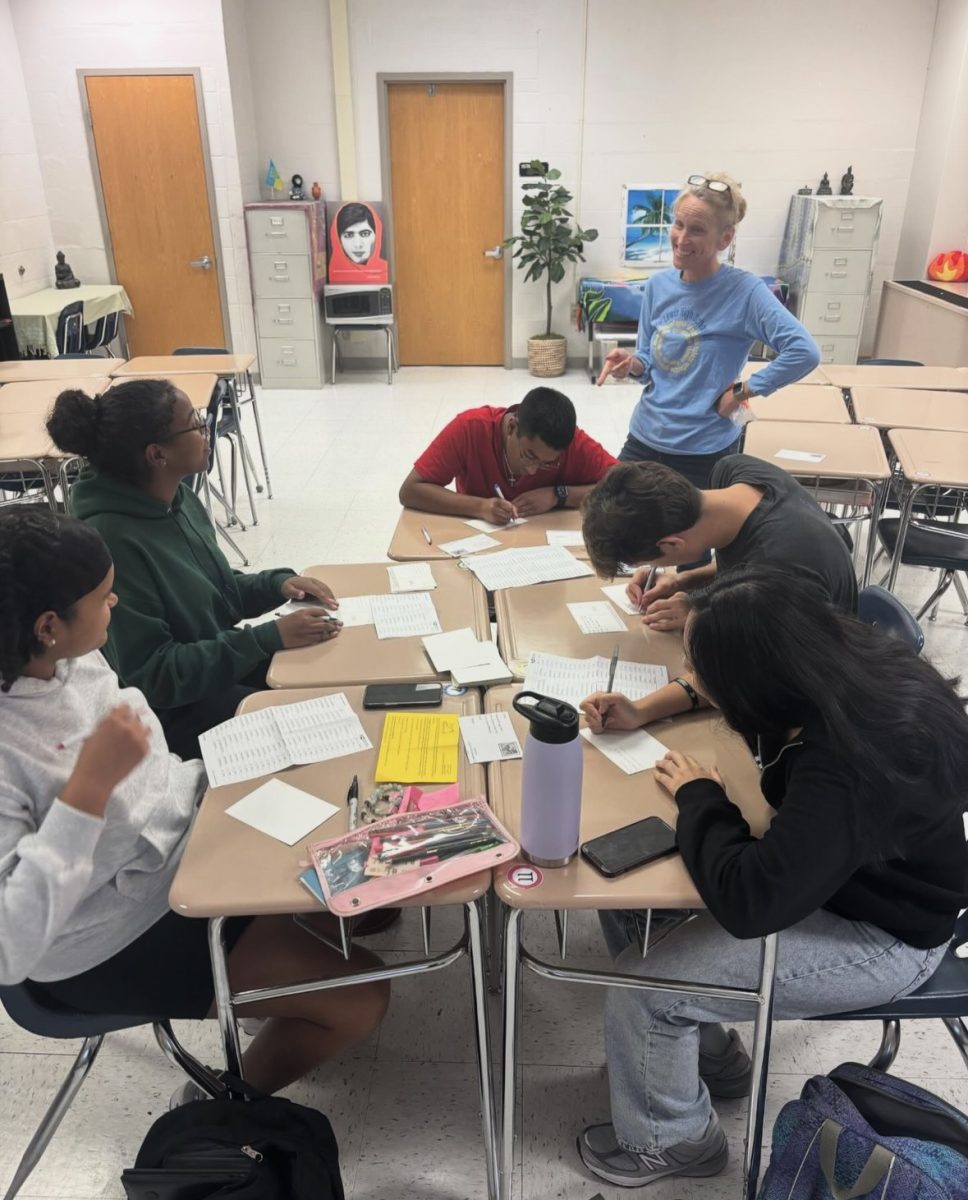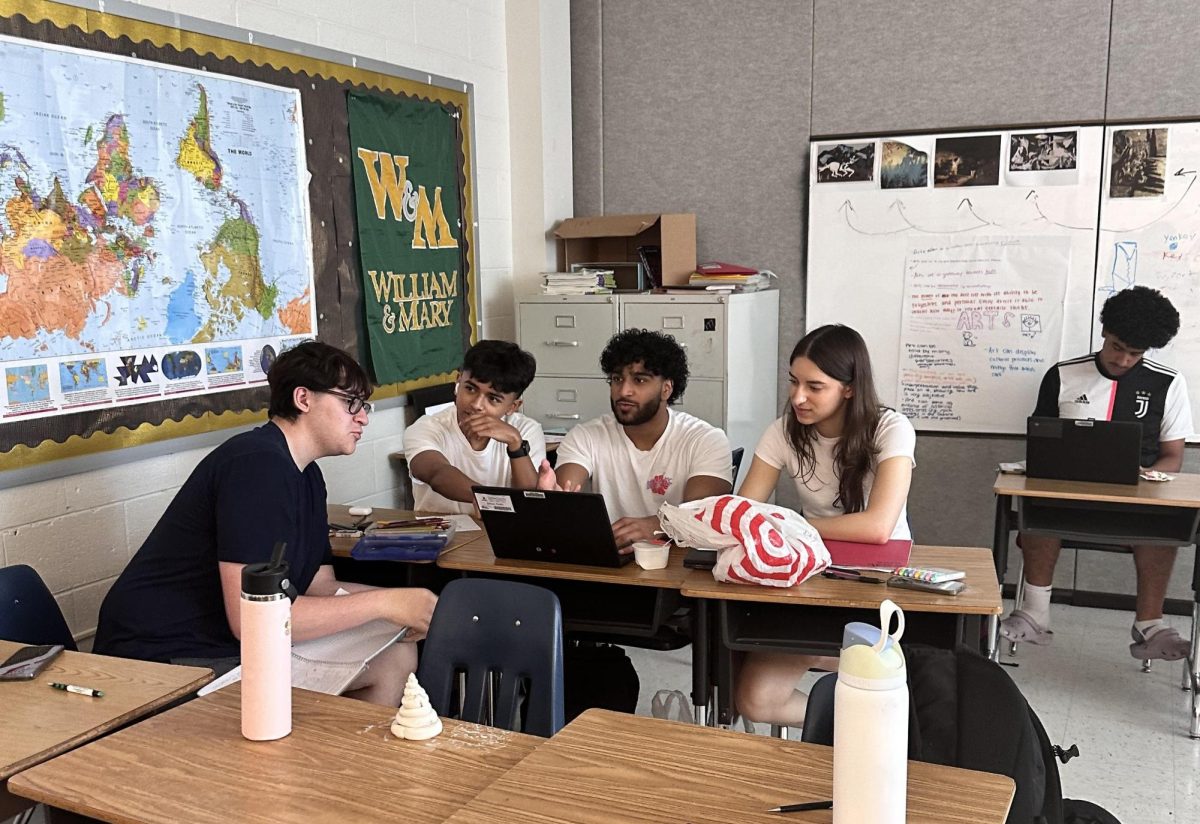Despite being the smallest high school in Fairfax County, Lewis High School has an orchestra program that is comprised of hard-working student musicians, creating beautiful music through their dedication. The Lewis Orchestra serves as more than just a music program, but it is an example of community, collaboration, and artistic expression.
In an era where arts education is overshadowed by core academic subjects, the orchestra remains a testament to the power of music, fostering personal and collective growth. Through challenging rehearsals and shared successes, students don’t just improve their musical skills, but build meaningful relationships that last beyond the classroom.
Under the leadership of orchestra teacher Rachael Altekruse, Lewis’ program offers three levels: Concert Orchestra, Symphonic Orchestra, and Chamber Orchestra.
Concert Orchestra provides an entry-point for developing musicians while Symphonic Orchestra offers a more rigorous challenge. Chamber Orchestra, the most advanced ensemble, demands technical mastery and frequently represents the school in competitions. Students in all three groups participate in seasonal concerts, as well as district assessments.
Story continues below advertisement
Orchestra offers students opportunities outside of Lewis as individual musicians have the opportunity to audition for District and All-State Orchestra, where they compete for a chance to perform alongside the most talented students in the region.
Orchestra, by nature, requires tight-knit teamwork. Every section, from the violins to the bass-violins, plays an important role in creating a harmonious performance. This deeply rooted dependence extends beyond music as it cultivates a class where students feel valued and heard.
Second Violinist Long Hoang describes how the orchestra creates a welcoming environment for everyone. “I’d say the orchestra has an amazing culture. It’s a supportive and welcoming space where everyone feels like they belong,” Hoang said.
First Violinist Kasandra Podhajecki echoes this thought, calling the orchestra “very diverse and inclusive.”
The relationships built within the orchestra are not solely the result of performances and rehearsals but also fostered in the natural moments, from inside jokes to shared frustrations.
First stand All-State violist and first violinist, senior Isaiah Reed explains how the orchestra creates a sense of camaraderie. “The orchestra is a community where we understand one another, sharing laughter that brings us closer together,” Reed said.
This unity is particularly evident throughout sectional dynamics, allowing for each group to develop their personality. The cellos are often the most vocal while the violas tend to be more reserved. Despite these differences, the orchestra performs as a single entity, with each player contributing to a greater whole.
Beyond community connections, the orchestra serves as a gateway to artistic exploration. Many students enter the program to fulfill an elective requirement only to gain a profound appreciation for music.
Hoang, for example, initially focused on mastering the basics of the violin, but with time, he found himself drawn to playing modern compositions of his own. “Being in orchestra made me realize how every section comes together to create something bigger,” Hoang said.
Altekruse stresses that orchestra is not only about playing the right notes and mastering basic skills but rather about experiencing and interpreting the music in a way that resonates deeply.
“Humans are very complex, and have a huge range of emotions, and sometimes music can capture that perfectly. It’s working together to portray these emotions while playing the notes, rhythms, accents, dynamics, etc. that makes a successful orchestra,” Altekruse said.
Orchestra extends its influence beyond music, creating meaningful collaborations with other academic departments. This year, under the leadership of conductor Altekruse, the orchestra worked alongside advanced art students to blend visual and literary elements with musical interpretation representing “The Hut of Baba Yaga.”
These projects not only enrich the orchestra’s creative range, but also reinforce the relevance of music in education.
Altekruse hopes that when her orchestra students graduate from Lewis, they take their love of music with them to enrich the community.
“I hope that the students take away their love of music and keep music in their lives somehow – whether that’s continuing playing in college, community groups, churches, or something like that, or being a supporter by attending orchestra concerts,” Altekruse said.
And the Lewis High School orchestra shows the impact music education has on students’ lives. Through challenging rehearsals and shared successes, orchestra students don’t just improve their musical skills but build meaningful relationships that last beyond the classroom. With continued support, Lewis’ Orchestra will keep evolving, creating a lasting impact on both its performers and its audience.







